London Tubes: Unexpected locations of underground trains
- Published
Tube trains are tested near the village of Old Dalby, Leicestershire
London's underground Tube trains are one of the capital's best-known symbols. And yet, the flash-by streaks of red, white and blue can be found in unexpected places up and down England. BBC News Online finds why Tubes are in such high demand.
From its iconic map to its crisp passenger announcements such as "mind the gap", the Tube train is indelibly associated with London.
So, to find one rushing past grazing sheep and wooded hillsides in the heart of rural Leicestershire comes as something of a surprise.
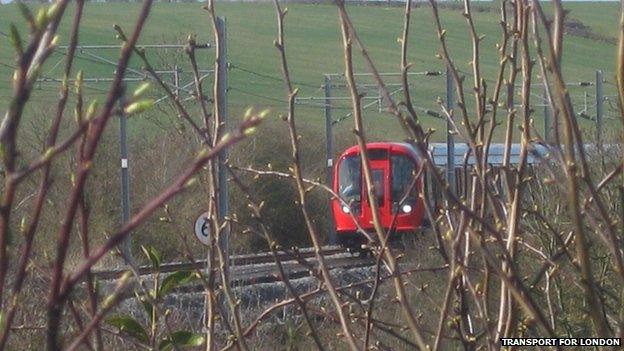
S Stock Tubes for the Metropolitan, Circle, Hammersmith & City and District lines are tested in rural Leicestershire
Especially because they are on the route of the old Midland Railway link between Nottingham and Kettering, which closed in the 1960s.
But, a 2.8 mile (4.5 km) stretch of the line, near the village of Old Dalby, is now used as a test track for Network Rail, which leases it to London Underground.
"We test the trains at Old Dalby because the Tube network is used 20 hours a day for passenger service, so we need to be able to test trains off site so that we're not disrupting passenger services," said a London Underground spokesman.
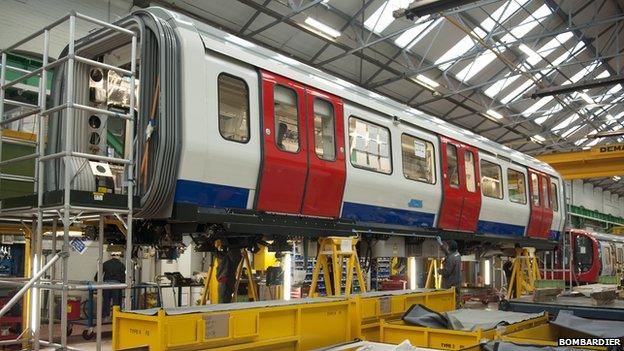
Bombardier builds Tubes at its site in Derby and the stock is tested in Leicestershire, before travelling to London
The new S - or sub-surface - stock Tubes, which are manufactured by Bombardier, in Derby, undergo a minimum of 500km (310 miles) of testing before being delivered to the transport network.
"The new trains will... serve the Metropolitan, Circle and Hammersmith & City lines and are being rolled out on the District," added Transport for London.
In which other unusual locations can Tubes be found?

On top of a building

The Tubes on top of a Great Eastern Street warehouse are used as a not-for-profit "cultural space"
London itself can hardly be described as an unexpected place to spot a Tube.
But four carriages sitting on top of a 10m (33ft) high Victorian warehouse is not something you come across every day.
The venue, in Great Eastern Street, Shoreditch, is run as a not-for-profit "cultural space" by Village Underground, an arts centre.
"We basically run a venue which is located under the trains," said office manager Amelie Snyers.
"We rent out the trains to various people - start ups, designers, freelancers etc."
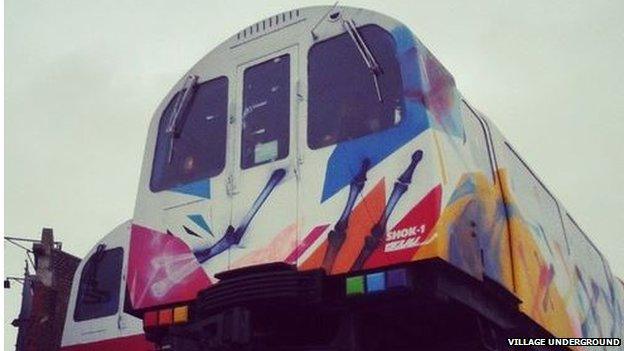
The "upcycled" Tubes are rented out to artists and designers by Village Underground, an arts centre
She said the venue's founder, Auro Foxcroft, came up with the idea of using the trains because he wanted to build "something as sustainable and eco-friendly as possible which is why he ended up upcycling old Tube carriages."

On an island
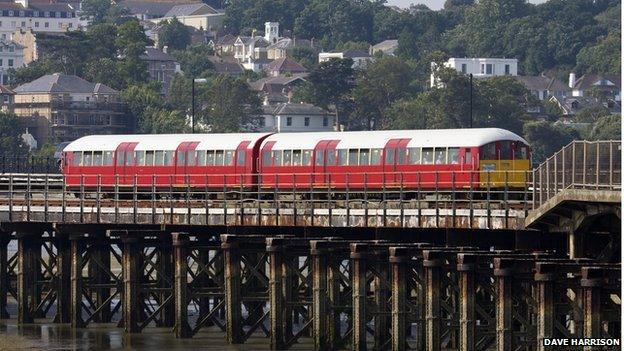
The Tube cars on the Isle of Wight travel 700m (2,300 ft) across water, carrying passengers from the pier to Shanklin
If you are used to dashing down a lengthy escalator to catch the next train to Marble Arch, you might be a little surprised to find London Tubes skimming around the more leisurely environs of the Isle of Wight.
But holidaymakers are accustomed to catching the re-commissioned rail links from the pier at Ryde to the seaside resort of Shanklin.
Andy Naylor, head of Island Line's customer experience, said 10 former Northern Line cars, dating from 1938, were bought after flooding in a tunnel meant the track-bed had to be raised.
"The Tube cars were the only stock that would fit through the tunnel," he said.
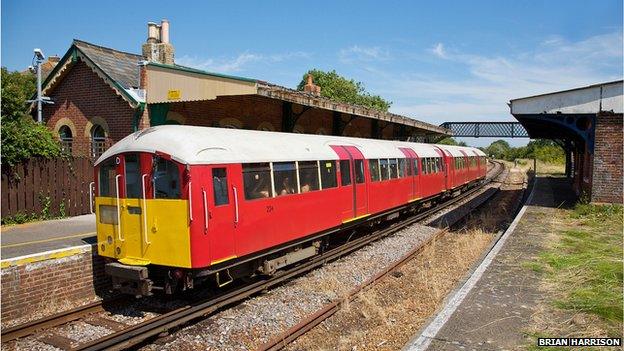
Island Line Trains say their Tubes are the oldest non-heritage stock still in regular service
Today, Mr Naylor says the Tubes are the oldest non-heritage stock in Britain still in regular service.
The carriages have been fitted with a standard wheel set, to enable them to operate away from the Underground network, but are painted in their original livery.
"They are one of those quirky things people come to the island to see," Mr Naylor said. "But people also use them every day to get to work and school. About one million people a year travel on the service."
The Isle of Wight link is not the only offshore network to employ ex-Tube stock.
Former Tube trains can also be found on the channel island of Alderney.
There, volunteers have restored a former quarry line to make a pleasure railway for tourists.
"I think the Isle of Wight went for them because they were fairly easy to get across there, whereas we went for them because they are practical for us," said Tony Le Blanc, chairman of the Alderney Railway Society.
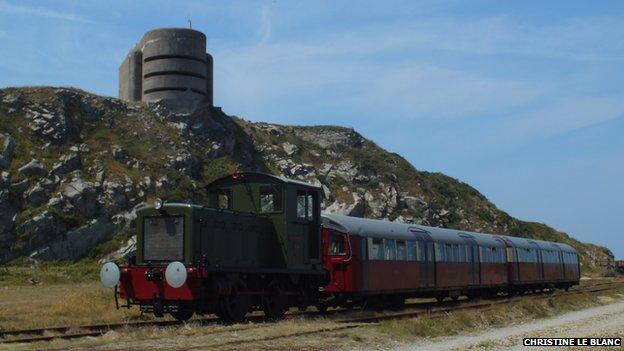
People are "surprised" to see the Isle of Alderney's Tube cars, which are pulled by a diesel locomotive
"The Tubes are light and only need small platforms. We have a 1949 diesel locomotive called Elizabeth and she chugs up and down, pulling the cars behind her.
"People are very much surprised to see them. They think it's really quirky. They can travel from the middle of the island down to the sea to explore the lighthouse.
"We get a lot of French visitors and I tell them the Northern line doesn't end at Morden - it actually ends in Alderney. You get a few of them who believe me."

As a film-set
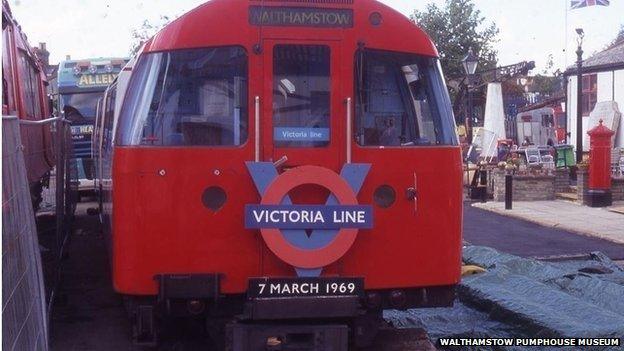
The Walthamstow Pumphouse Museum says it gets film crews in "all the time"
Tube trains make popular film sets.
As Lindsay Collier, who founded the Walthamstow Pumphouse Museum says: "It's very difficult to film in an Underground car on the Tube, so we get film-makers in all the time.
"They come because it's quite reasonably priced and it's safe - you're not anywhere near live rails. The film-makers put up blue screens outside the windows so it appears as if the car is moving."
The museum has a decommissioned 1968 model Victoria Line Underground railway carriage and Mr Collier hopes to build a replica Tube platform for it next year.
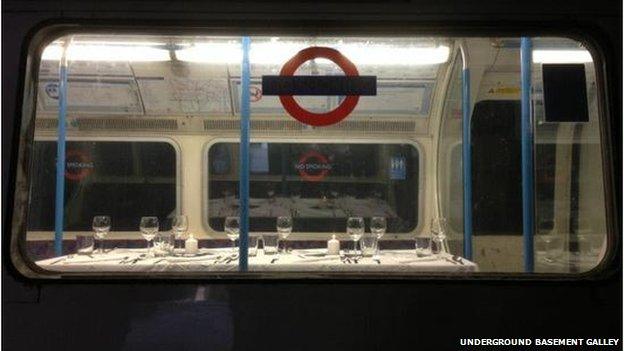
The car has another use - as a "supper club" destination for Londoners
The car also doubles as a part-time restaurant, being used by an organisation called Underground Basement Galley for a monthly supper club.
Alex Cooper, managing director of the company, said people like eating and socialising in the Tube because it seems opposed to normal Tube etiquette.
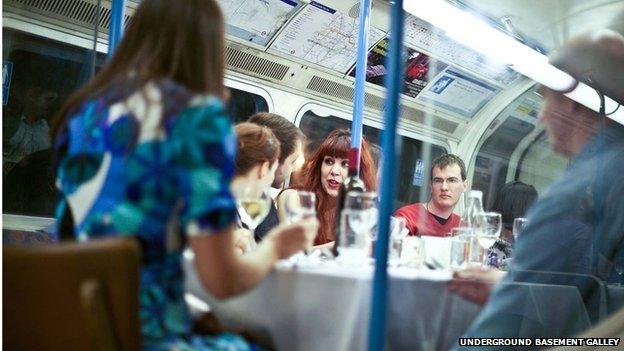
The company that organises the supper club says it is novel for people to talk and socialise on the Tube
"Normally when you go on a Tube, eating is frowned upon and people don't really talk to each other," he said.
"At our supper club, we encourage complete strangers to sit next to each other and engage with each other. As a result, we've had people start business deals and one couple even got married after meeting that way."
The Vintage Carriages Trust, based at Ingrow, near Keighley, also has two Metropolitan line carriages from 1919 and 1924 that are frequently used in films and TV shows, including the Woman in Black and the BBC's North and South.
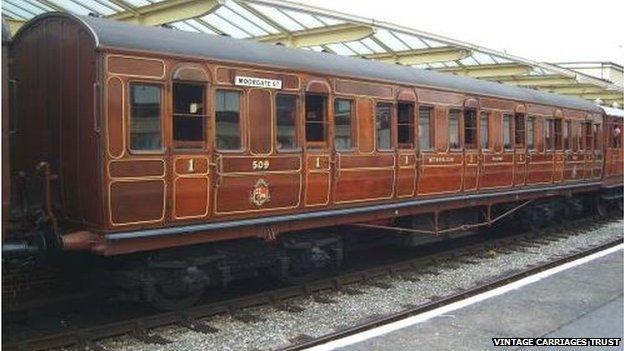
The BBC's North and South was one of several productions to use the heritage Tubes at the Vintage Carriages Trust, near Keighley
"Our carriages aren't necessarily what may spring to mind for many people when they think of Tube trains," said Jackie Cope, the trust's treasurer.
"The carriages are wooden and date from the days when the Underground was steam-hauled."

On a farm
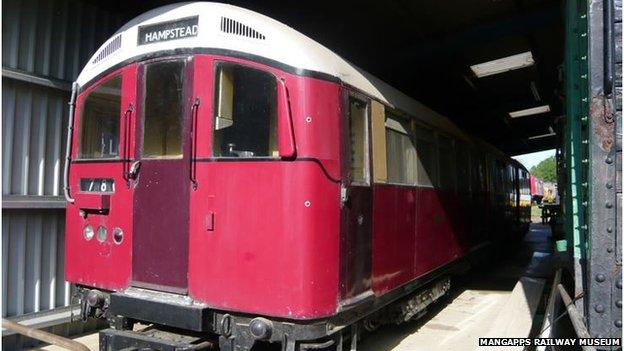
The Mangapps Railway Museum, based on a farm in Essex, says its three Tube cars are popular with visitors
There are three Tube carriages in the middle of a farm in rural Essex - but this is the home of the Mangapps Railway Museum.
Managing partner John Jolly and his team look after the coaches, two from 1959 Northern stock and one a 1938 District line car.
The coaches, currently non-operational, form part of an exhibition at the museum about London Tubes.
"There aren't many places you can see old London underground trains," said Mr Jolly. "Railway preservation is usually centred around steam railways.
"I think there are two main reasons why they are so popular. The first is that so many people have travelled on the Tube. It was the first and, for a long time, the largest urban rail transport network in the world.
"The second is that it's one of those icons - like the London bus - that people associate with London."
- Published3 October 2014
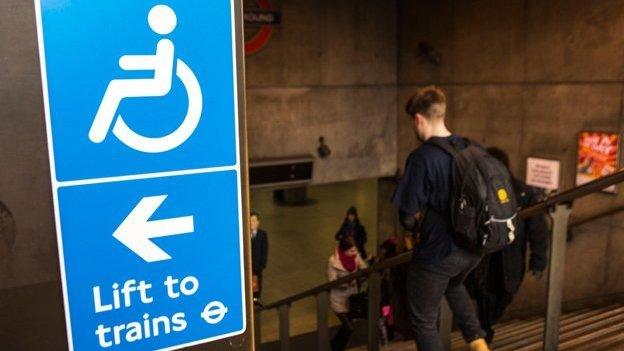
- Published24 September 2014
